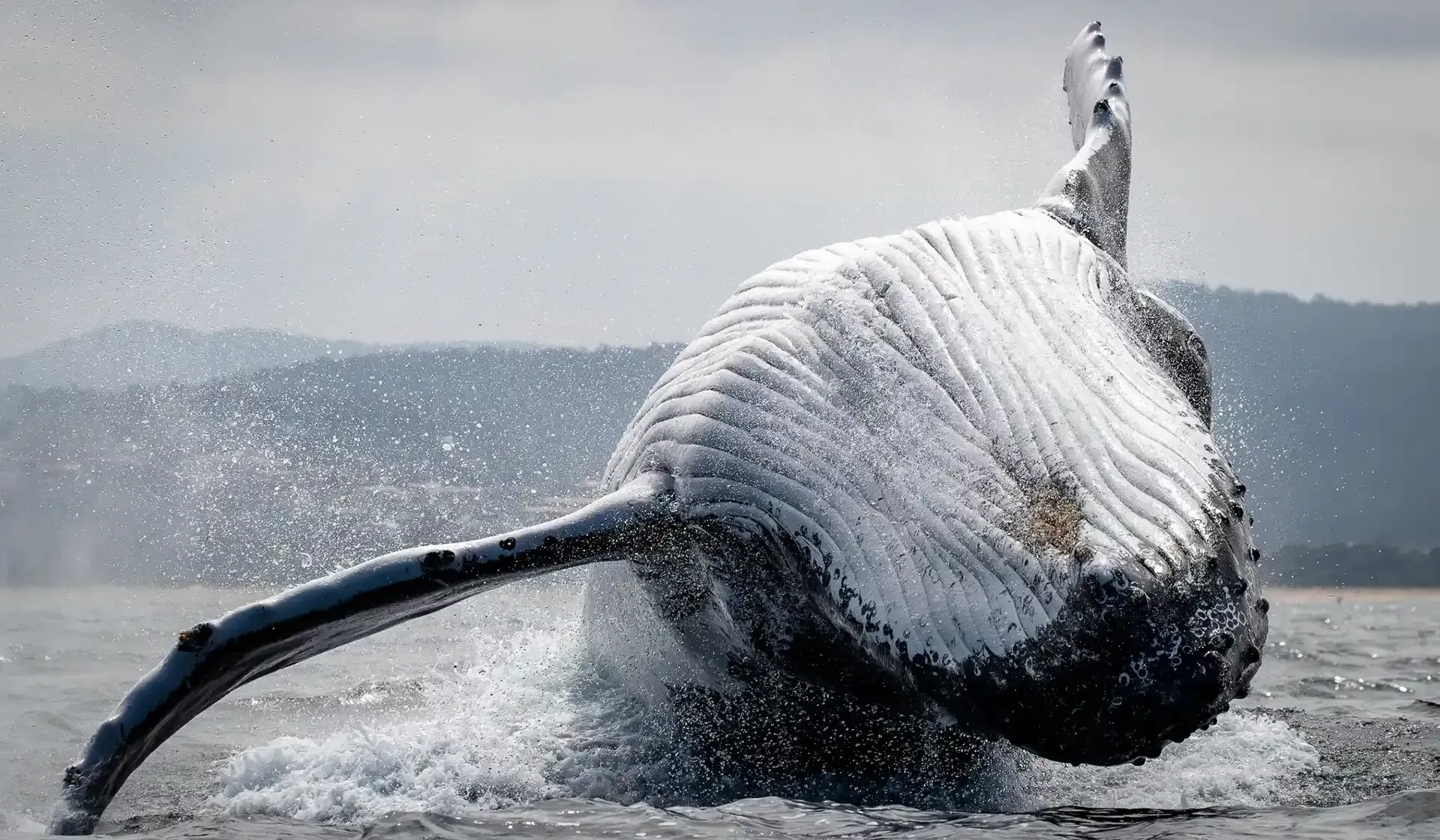All aboard wildlife photographers,
Cameras ready, memory cards clear, the whales are here! Whether you're chasing the perfect breach shot or just want proof that you really did see a whale, photographing whales out at sea is challenging but the rewards can pay off.
At Go Whale Watching Sydney, we're proud to have a gang of talented and experienced wildlife photographers regularly joining our cruises. You’ll spot them by their signature move - half hanging off the railing, crouched like a seagull, or lying flat on the deck with one eye glued to the viewfinder. Whatever it takes to get the shot!
To help you make the most of your time on the water, we’ve asked our onboard photographers to share their top tips. Whether you’re shooting with a DSLR or just a handy mobile phone, their advice will help you prepare and (hopefully) walk away with a stellar shot.
Get your camera settings right
If there's one name synonymous with whale photography on our boats, it’s Wayne Reynolds. A dear friend and trusted regular for over 20 years, Wayne has been photographing whales for more than three decades, long before high-speed digital cameras were the norm. He believes in getting the shot right in-camera, rather than fixing it later with editing, which shows in the clarity and authenticity of his work.
His preferred setup is a 100–400mm lens, shooting in Aperture Priority (AV) mode with shutter speeds above 1/1250 sec, aperture at f/6.3 or higher, and ISO between 200 and 400, adjusting to ISO640 and above if he can’t keep a high shooting speed. He constantly tweaks exposure compensation and uses a single-point focus to lock onto fast-moving subjects.
We call Wayne the “godfather” when it comes to whale photography and many of the stunning images on our website and social media are Wayne’s.
Never take your eyes off the ocean
John Goodridge’s number one rule? Don’t look away. Ever.
It’s simple, if you look away, you’ll miss it. That means no getting distracted by gear, fellow passengers, or even fellow photographers. According to John, success comes from reading whale behaviour, timing the downtime of the whales, expecting the unexpected, and learning to “think like a whale.”
Understanding the rhythms of their movement gives you a better chance of predicting where and when they’ll surface. And another cheeky tip? “Only talk to Canon users, then you will get the images and the rewards.”
Find John Goodridge on Instagram: @jpgoodridgephoto
Keep your shutter speed high
Action happens fast, and for Ariel Baron, it’s all about shutter speed. To freeze the power of a breach, you need to shoot fast. In normal daylight, Ariel’s camera is set to ISO 400 with an aperture of f/7.1. But as the light begins to fade, especially during the coveted afternoon golden hour, it’s important not to let your shutter speed drop below 1/1250 sec to accommodate for the low light conditions. Instead, keep increasing your ISO as needed to preserve clarity and sharpness whilst maintaining your fast shutter speed.
Some further nuggets of wisdom include always making sure your batteries are charged, your memory cards are ready (and formatted), and a microfibre cloth is in your pocket for sea spray. A portable battery charger does not go astray either!
To get the best angle, Ariel often gets low on the deck with knee pads for comfort. Importantly, Ariel recommends paying attention to the captain’s commentary – they often know where the magic will happen! And after your whale watching trip is over, don’t skimp on the TLC. Make sure you wipe down your camera and lens with a damp cloth to remove any salt.
Find Ariel Baron on Instagram: @ab_wildlife
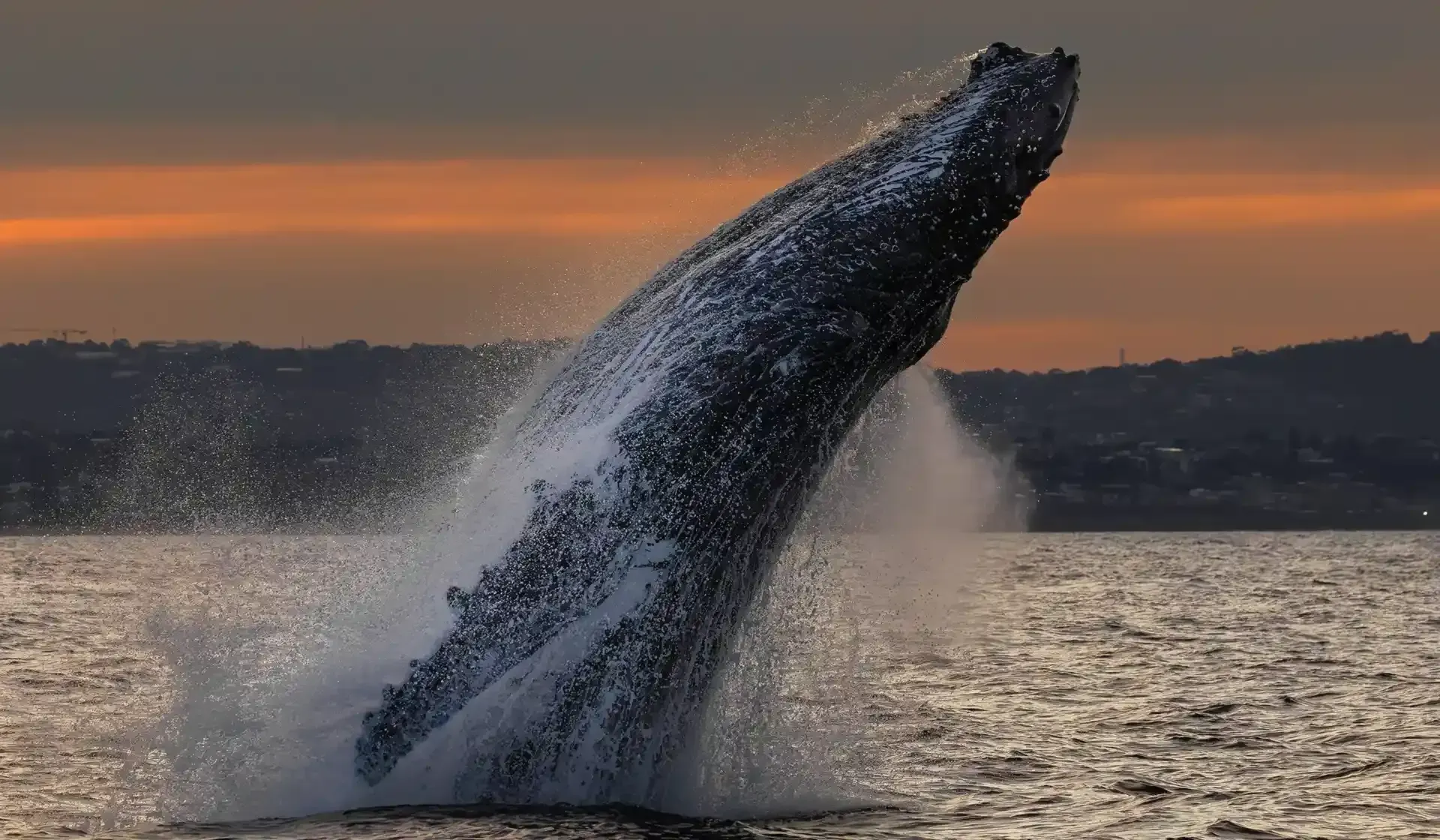
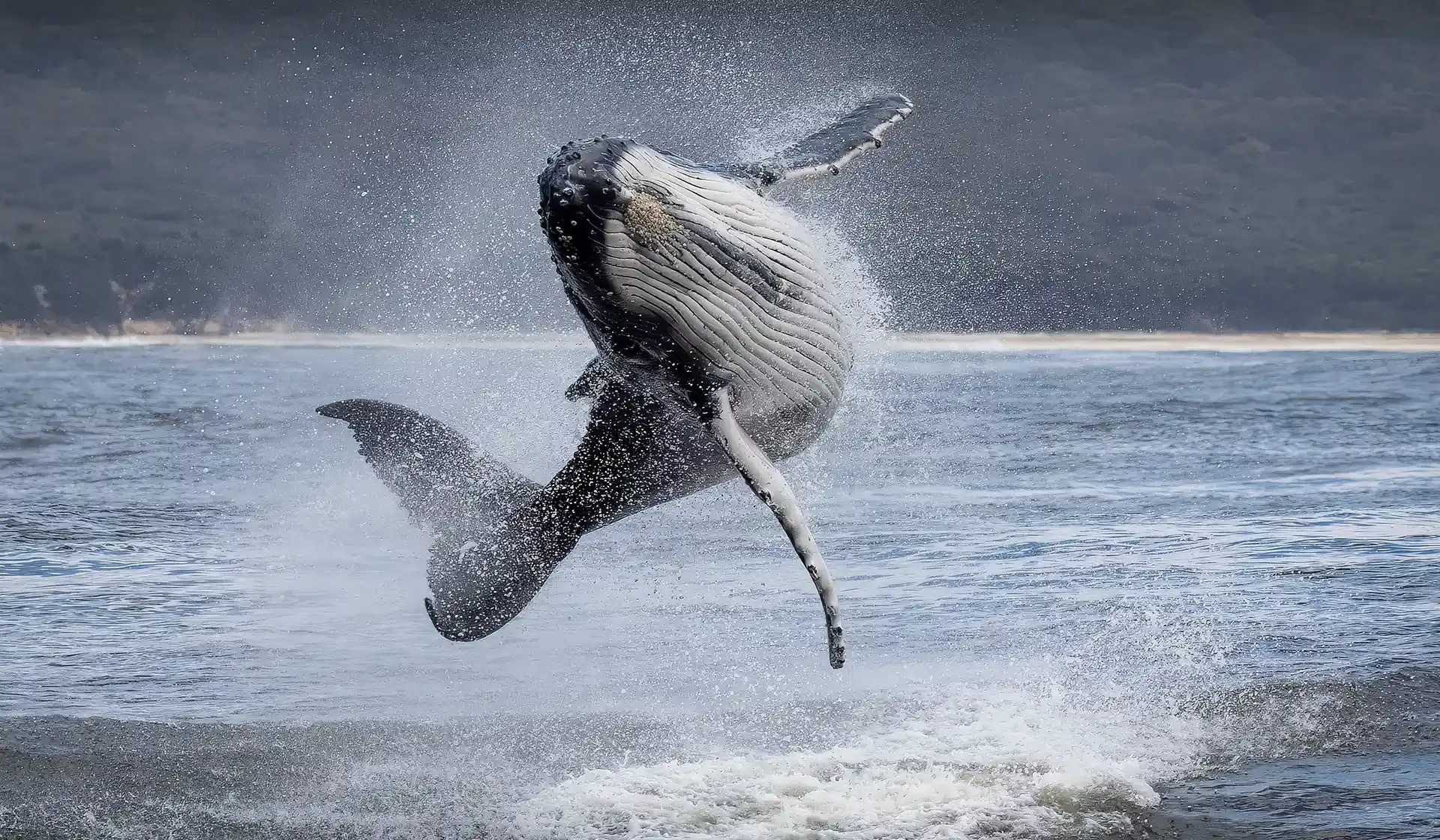
Prepare your gear and your mind
For Scott Buttigieg, successful whale photography begins long before you step on the boat. “You need to set up your gear in advance. Once the whales appear, there's no time to fumble.”
Scott emphasises the importance of being physically comfortable and mentally focused. If you're cold, seasick, or preoccupied, your reaction time and creativity take a hit.
It’s not all about camera settings either. Without preparation, awareness, and instinct, the perfect settings won’t get you the shot, especially not of a breaching humpback. Avoid checking your images mid-cruise. Action usually happens the second you look away, so stay alert.
His most important word of advice: “Have a passion for what you're photographing. That’s what turns a technically good photo into something meaningful.”
Find Scott Buttigieg on Instagram: @scott.buttigieg
Quick reflexes and balance are everything
Mikah Millar may be our youngest regular photographer, but don’t let his age fool you. At just 16, Mikah has spent more time on whale boats than most people will in a lifetime. If his name sounds familiar, that’s because he’s one of us Millar crew, and he’s grown up on deck surrounded by both whales and wildlife photographers.
Mike keeps his advice simple: “The most important thing is to have quick reflexes and good balance.” After watching thousands of encounters unfold, he knows that the key to getting the shot lies in being ready for the unexpected. That means anticipating where the whale will surface and having your camera up, finger on the shutter.
He also stresses the importance of knowing your gear inside out and being steady on a moving boat — because if you hesitate, the moment’s gone.
Find Mikah Millar on Instagram: @mikah_m_photography
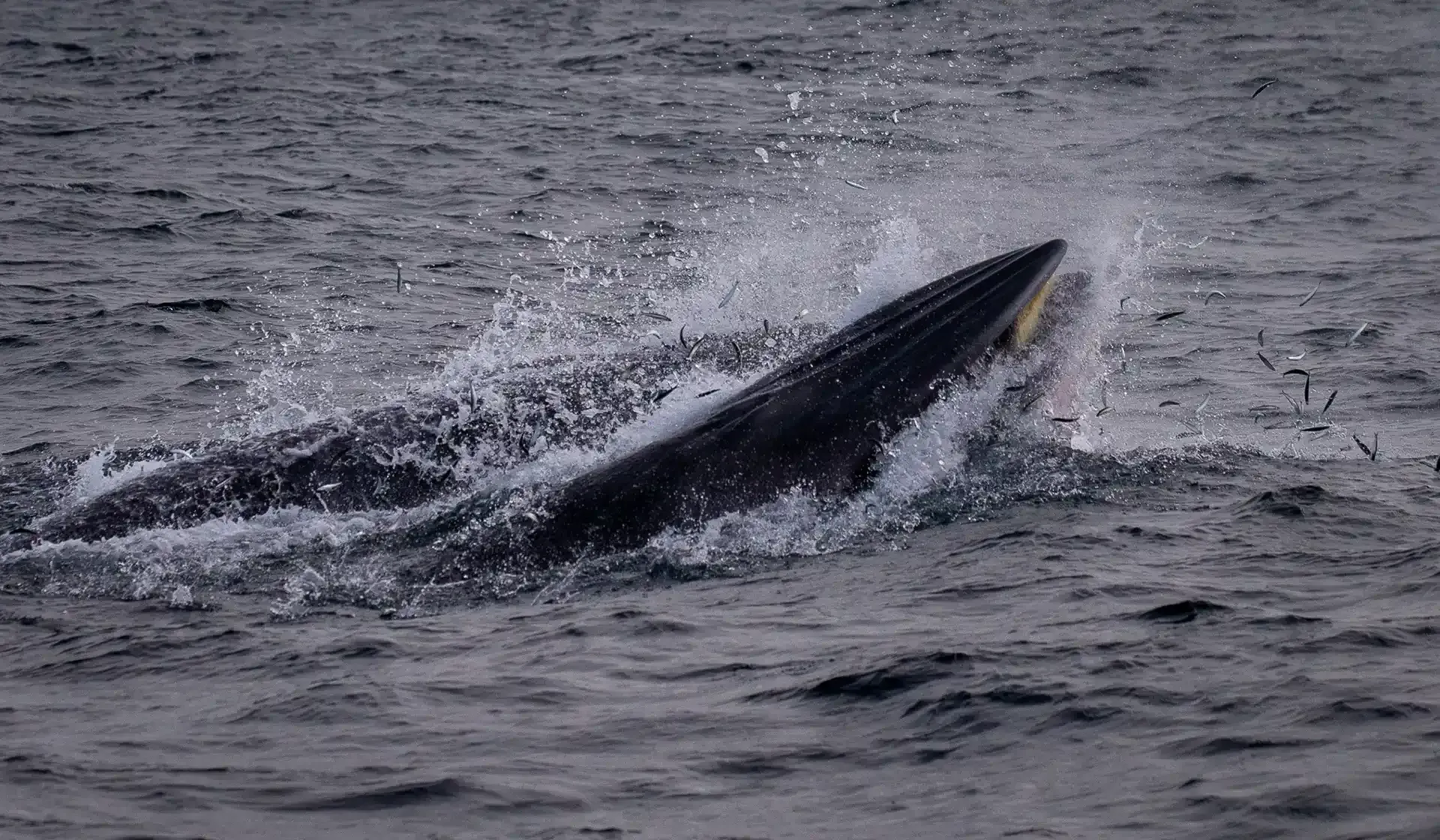
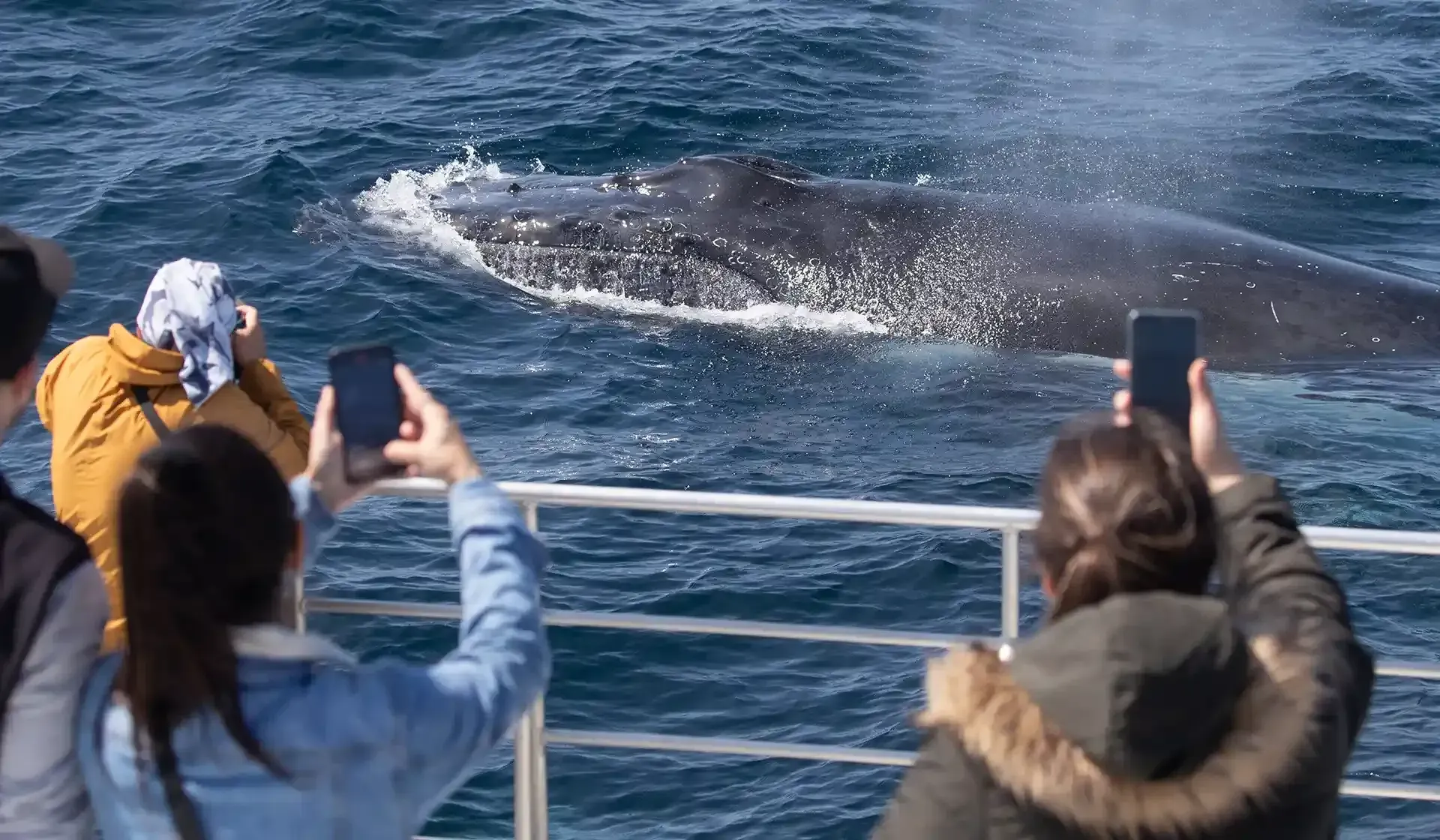
Tips for mobile photography and video
There’s no need to turn your nose up at the humble smartphone! Today’s phone cameras have come a long way and can capture great whale moments. Make sure your lens is clean, your settings are set, and your hands are steady. Use burst mode to catch fast action like breaches, and turn on gridlines to help with framing and horizon balance.
Video is great option on mobile, especially if you want to relive moments like mugging, logging and the simple beauty (and sound!) of a whale blow. Just remember, whales don’t wait for you to unlock your screen, so keep your phone ready and your eyes on the water.
Be careful not to overdo the zoom, especially when videoing. Zooming while filming on a mobile can make your footage look shaky and unstable, especially on a moving boat, as even small movements are exaggerated. It can also make it harder to keep fast-moving whales in frame, so keep this in mind and try to keep your hands as steady as possible.
Whale cruises in Sydney
Whale photography is unpredictable, and often you’ll miss the perfect shot. Trust us, we know the feeling well! The good news is our onboard photographers are there to catch the magic for you, so you can stay present without feeling pressured to document every moment. We upload a selection of photos from each cruise to our social media channels so you can relive the best encounters!
We’d love to help you experience the joy of whales - book your whale cruise in Sydney now.
Enjoy the moment,



